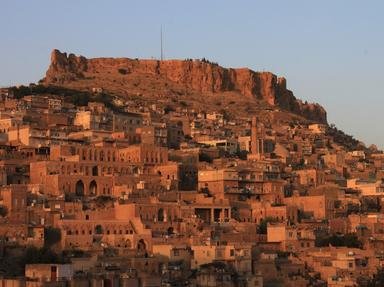Quiz Answer Key and Fun Facts
1. In what modern country did the Sumerian civilization begin?
2. The Sumerian civilization began in an area that is called "Mesopotamia", or the "land between the rivers'. What two rivers join to form this area?
3. The ancient Sumerians lived in political units called city-states. One of the most famous of their ancient city-states was also the birthplace of the Bible's Abraham. What was the name of this city-state?
4. Which term BEST describes the religion of the ancient Sumerians?
5. The sky god of the Sumerians, Anu, eventually became the ruler of all the gods. He was identified with what number, that still holds significance today?
6. Everyone learns in school that the Sumerians developed the world's first written language, called cuneiform, which was written on clay tablets. What does the word cuneiform mean?
7. Ancient cuneiform was decoded by the independent efforts of two men, Georg Grotefend and Henry Rawlinson, who used the Rosetta Stone to unlock the mysteries of the language.
8. Most of the ancient cuneiform tablets that have been found contain legal documents; some contain poetry or words of wisdom. One was found, however, that tells a story that is very similar to the story of Noah's Ark in the Bible. What is this story called?
9. The Sumerians invented the world's first monumental building out of clay - the ziggurat. The ziggurat resembles a step pyramid, with rooms for different purposes at each level. For what was the room on the top of a ziggurat used?
10. In 1922 Sir Leonard Wooley, a British archaeologist, discovered the Royal Cemetery of Ur, which contained many exquisite objects. One of his most important finds there, however, was two small wooden panels he called the Royal Standard of Ur. Why is the Royal Standard historically significant?
Source: Author
ponycargirl
This quiz was reviewed by FunTrivia editor
bloomsby before going online.
Any errors found in FunTrivia content are routinely corrected through our feedback system.


